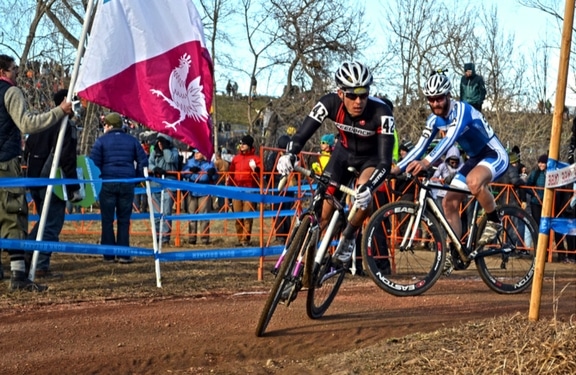
Prepare for a Great Cyclocross Season With These 3 Tips and Key Workout
Cyclocross is a wonderful way for road cyclists and mountain bikers to extend their competitive seasons and get a head-start on training for next season. The intensity of cyclocross racing provides a training stimulus that’s very difficult to replicate with standard interval training during the fall and winter, especially as the temperatures fall and athletes turn primarily to indoor cycling.
If you’re making the transition from your road or mountain bike season to cyclocross, it’s a good idea to take a break of about two weeks between your seasons. During this time, you want to retain the frequency of your rides (if you normally ride 4-5 times a week you should continue to ride 4-5 times a week), but you want to back off the intensity and pretty much entirely cut out structured workouts. Just ride your bike at a recovery or endurance pace for two weeks; you’ll feel a lot fresher and you’ll appreciate the mental break as well.
[blog_promo promo_categories=”coaching” ids=”” /]You don’t want this recovery period to last much more than two weeks, however, because you don’t want to lose too much of the high-end fitness you’ve developed through the road or mountain bike season. In a two-week period, you might lose a tiny bit of your high-end (the power for repeated maximal efforts), but your aerobic conditioning and power at lactate threshold will remain largely unchanged. And fortunately, any losses in power at VO2 max will come back quickly as you transition into cross-specific workouts.
Once you get back into full-strength training, there are a few important things you need to keep in mind:
Cross Practice
Cyclocross is a very technique-centric discipline, perhaps the most technique-driven of all cycling disciplines. It’s absolutely essential that you get on your cross bike for a skills practice or training race once per week. Fortunately, more and more communities have a cyclocross training race in the middle of the week, and you should be able to find one by consulting your local bike shop or cycling club.
Race-Pace Intervals
Outside of a cross practice, it’s important to incorporate race-pace interval workouts into your training program. One of the best workouts for this is a PowerInterval that ends with a cyclocross run-up. Like standard PowerIntervals, these start with a 15-second ramp up to the maximum power output or intensity you can sustain for a full minute. But unlike standard PowerIntervals, you want to ride into the base of a steep hill or staircase at about the 45-second mark. Dismount, shoulder the bike, and sprint up the hill or staircase. Remount the bike and accelerate back to race pace (about 10-15 pedal strokes). After each interval, spin easy back to your starting point and immediately start the next interval. Aim to complete 6-10 of these intervals in a continuous set.
► Free Cycling Training Assessment Quiz
Take our free 2-minute quiz to discover how effective your training is and get recommendations for how you can improve.
Bank Away Endurance Miles Early
As the cyclocross season progresses, the weather will get worse and the scope of your training will become more race specific (short workouts, lots of high-intensity intervals). While the weather is still relatively good, use one of your weekend days for long endurance rides. Think of it as an investment in your aerobic conditioning that will reward you in November and December. When it’s colder and the days are shorter, you’ll have fewer opportunities and less motivation to go out for 3+ hour rides, so bank away that endurance training now.
[blog_promo promo_categories=”contest” ids=”” /]Committing to your local cyclocross series is one of the best ways to prepare for a strong road or mountain bike season next year. Athletes who race cyclocross retain or improve their aerobic conditioning, power at lactate threshold, and power at VO2 max while athletes who focus solely on long endurance rides through the fall tend to lose at least 10% of their power at threshold and even more of their high-end power. Athletes who back away from training altogether can lose 20% of their power at threshold between October and January, and the lack of training decimates their high-end fitness. So if you want to see significant performance gains next season, it’s crucial that you don’t let the improvements you made this year slip away due to inactivity or a lack of focus.
► FREE Mini-Course: Learn How to Maximize Your Limited Training Time
Learn step-by-step how to overcome limited training time and get faster. Walk away with a personalized plan to increase your performance.

Comments 1
Hey, Thanks, great article. New to cyclocross (loving it)
and I am not sure what is meant by “power at lactate threshold and/or power at VO2 max”. Just enjoying the training and aerobic conditioning I’m getting!! It’ll come together
Again great article and thanks for posting
“Stay Motivated”
Mike